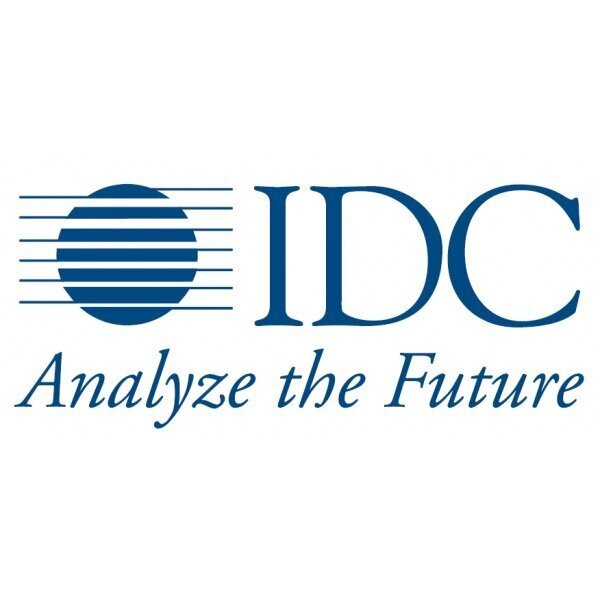Rising competition from OTT streaming service providers, rapidly changing consumer expectations, and the introduction of disruptive emerging technologies are converging to transform the broadcast sector. Consequently, leaders in the industry are accelerating efforts to modernize investments in production and information technology to support new workflows and operations that will enhance their market positions, according to Eric Deniau, senior vice president of research and development at VITEC, in a podcast interview for journalists.
Read MoreAs the streaming and content service provider markets move past the immediate aftermath of COVID-19, which stimulated demand for over-the-top (OTT) offerings through the shelter-in-place period, the industry now faces headwinds driven by rising inflation and the prospects of a global recession.
"The OTT sector is experiencing a major wave of change as consumer attitudes and behaviors rapidly evolve in new directions. A significant pivot is taking place as we moved beyond the pandemic when a slew of new streaming service providers rushed into the market to engage directly with consumers starved for new content and experiences," says Matt McSweeney, Vice President of Sales at TiVo.
Read MoreParks Associates’ recent consumer research finds that 83% of US internet households now subscribe to at least one OTT service, while 45% still subscribe to the traditional linear pay-TV service model. The firm’s new whitepaper, Engaging Next-Gen Video Viewers: Leveraging AI and ML, developed in partnership with FPT Software, addresses the increased use of video services, content preferences, discovery challenges, and the role of bundles.
Read MoreDespite the popular belief that organizations derive value from artificial intelligence (AI) at the expense of the individuals they employ, and that AI-powered automation can lead to the displacement of workers, 60% of employees view AI as a coworker and not a job threat. Furthermore, organizations with employees who derive value from AI are 5.9 times as likely to see significant financial benefits from it than organizations where employees do not get value from AI, according to a report from MIT Sloan Management Review (MIT SMR) and Boston Consulting Group (BCG) being released today.
Read MoreWhile 84% of global executives believe responsible AI (RAI) should be on top management agendas, only 25% have comprehensive RAI programs in place, as shown in a joint study published today by MIT Sloan Management Review (MIT SMR) and Boston Consulting Group (BCG).
Read MoreWorldwide revenues for the artificial intelligence (AI) market, including software, hardware, and services for both AI centric and AI non-centric applications*, totaled $383.3 billion in 2021, an increase of 20.7% over the prior year, according to the most recent International Data Corporation (IDC) Worldwide Semiannual Artificial Intelligence Tracker.
Read MoreThe next wave of Internet of Things (IoT) analytics development will fully converge with the Big Data domain. Simultaneously, the value in the technology stack is shifting beyond the hardware and middleware to analytics and value-added services, such as Machine-Learning (ML) and Artificial Intelligence (AI). ML and AI services are estimated to grow within the IoT domain at a CAGR of nearly 40%, reaching US$3.6 billion in 2026.
Read MoreOver these next few months, the post-pandemic landscape will begin to take shape. Technologies like 5G, Artificial Intelligence (AI), Augmented Reality (AR), IoT, and those enabling smart cities and the smart home will play pivotal roles in reshaping businesses, verticals, and economies around the world.
Read MoreSmart AI-based cameras enable an increasing number of low latency mission-critical machine vision applications like pedestrian detection and alerting, and real-time surveillance in the Intelligent Transportation Systems (ITS) and the wider Smart Cities markets.
Read MoreIn the immediate wake of COVID-19, Global 2000 companies moved to slash funding for emerging technologies, such as automation, artificial intelligence (AI), blockchain, and 5G, according to new KPMG International research. However, many executives are optimistic emerging technology spending will likely increase in the next 12 months
Read MoreOne of the most potent levers enabling digital transformation today is Intelligent Automation in Business Processes (IABP). The IABP market will endure muted growth in 2020 due to COVID-19 but experience a strong resurgence when global economies emerge out of the pandemic crisis.
Read MoreGlobal spending on artificial intelligence (AI) is forecast to double over the next four years, growing from $50.1 billion in 2020 to more than $110 billion in 2024. According to the International Data Corporation (IDC), spending on AI systems will accelerate over the next several years as organizations deploy artificial intelligence as part of their digital transformation efforts.
Read MoreThe worldwide market for artificial intelligence (AI) software will expand to $98.8 billion by 2025, rising by a factor of six from $16.4 billion in 2019, despite the varying effects of the COVID-19 pandemic across different industries, according to research from Omdia.
Read MoreIn a new study published by the National Cancer Institute (NCI), a computer algorithm improved the accuracy and efficiency of cervical cancer screening compared with cytology (Pap test), the current standard for follow-up of women who test positive with primary human papillomavirus (HPV) screening. The new approach uses artificial intelligence (AI) to automate dual-stain evaluation and has clear implications for clinical care. The algorithm was developed and the study conducted by investigators at the NCI, part of the National Institutes of Health (NIH), in collaboration with researchers from several other institutions.
Read MoreMore than 2,000 IT and line of business (LoB) decision makers confirms that adoption of artificial intelligence (AI) is growing worldwide, as shown by a recent survey conducted by the International Data Corporation (IDC). Over a quarter of all AI initiatives are already in production and more than one third are in advanced development stages, and organizations are reporting an increase in their AI spending this year.
Read MoreA study from Frost & Sullivan claims that by 2024, the artificial intelligence (AI) market for surgery will reach $225.4 million up from $69.1 million in 2019. The use of AI and analytics in conventional operating rooms will help hospitals address inefficiencies and clinical challenges physicians face when performing surgery, according to this new study.
Read MoreFrost & Sullivan’s recent study, Analysis of the Global Airline IT Market, Forecast to 2025, finds that the increasing expectations of passengers are compelling airlines to embrace digital enablers and propelling a digital transformation journey that will fundamentally change traditional airline information technology (IT) strategies. Impacted by the COVID-19 pandemic, the airline IT market is estimated to generate a revenue of $20.74 billion by 2025, compared to $21.20 billion in 2019. As per the original forecast, by 2025, the market was estimated to reach $25.1 billion from $21.20 billion in 2019.
Read MoreBy the end of 2024, 75% of organizations will shift from piloting to implementing Artificial Intelligence (AI). This is one of the top 10 data and analytics (D&A) technology trends for 2020 that analysts at Gartner say will help organizations prepare for a post-pandemic reset.
Read MoreOver 40% of privacy compliance technology will rely on artificial intelligence (AI) by 2023, up from 5% today, according to Gartner, Inc. “Privacy laws, such as General Data Protection Regulation (GDPR), presented a compelling business case for privacy compliance and inspired many other jurisdictions worldwide to follow,” said Bart Willemsen, research vice president at Gartner.
Read More


















